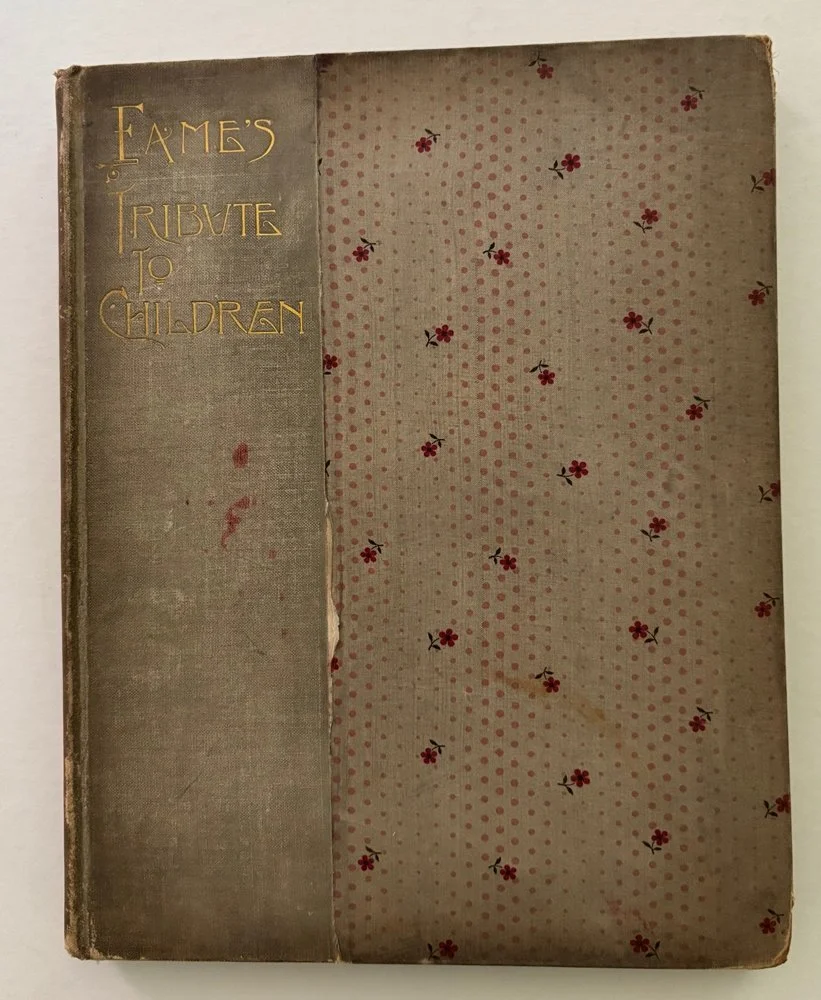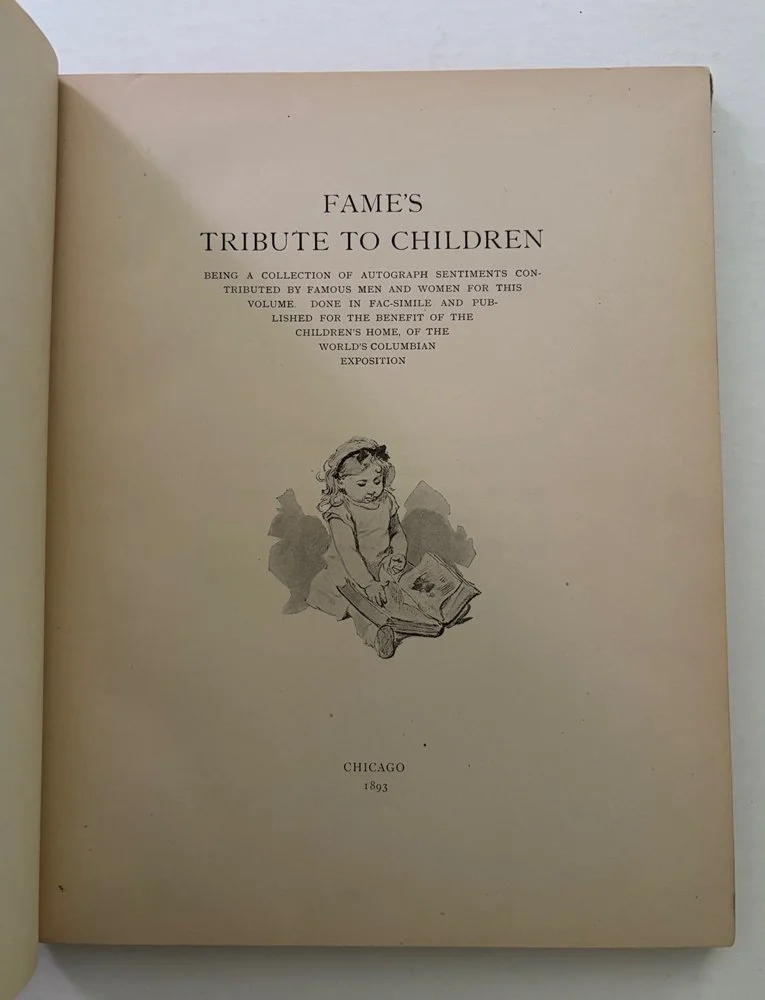


Fame’s Tribute to Children
Compiled by the Children’s Building Committee, Hayes and Company, Chicago, 1892, 101 pp, cloth covered, printed in at least two editions. The book includes two parts. In the tradition of some Civil War Sanitary Fairs, champions for a Children’s Hospital, to be built in conjunction with the 1893 Chicago World’s Fair, solicited holograph quotes from prominent figures. These would be reproduced in facsimile and the books used as fundraisers. The result was this fine collection of 142 facsimiles of leading Americans and some international figures. Fame accompanied many of the subjects to their graves while surviving others for at least another 150 years. The book appealed to more than autograph collectors and even today can be appreciated by collectors of World Fairs memorabilia. The facsimiles of handwriting rather than just signatures sustain some reference value for today’s collectors. It is an attractive early example of a now common practice of autograph solicitation for non-profits and special projects. The book’s title may reveal the content, but it hides the connection to autographs, leaving it a missed resource in most autograph reference collections.
Second-edition with a flower-patterned half-cover and gilded lettering. The binding is solid but beginning to give a little. The pages are clean and tight, the front and back cover show some fading and soiling.
Compiled by the Children’s Building Committee, Hayes and Company, Chicago, 1892, 101 pp, cloth covered, printed in at least two editions. The book includes two parts. In the tradition of some Civil War Sanitary Fairs, champions for a Children’s Hospital, to be built in conjunction with the 1893 Chicago World’s Fair, solicited holograph quotes from prominent figures. These would be reproduced in facsimile and the books used as fundraisers. The result was this fine collection of 142 facsimiles of leading Americans and some international figures. Fame accompanied many of the subjects to their graves while surviving others for at least another 150 years. The book appealed to more than autograph collectors and even today can be appreciated by collectors of World Fairs memorabilia. The facsimiles of handwriting rather than just signatures sustain some reference value for today’s collectors. It is an attractive early example of a now common practice of autograph solicitation for non-profits and special projects. The book’s title may reveal the content, but it hides the connection to autographs, leaving it a missed resource in most autograph reference collections.
Second-edition with a flower-patterned half-cover and gilded lettering. The binding is solid but beginning to give a little. The pages are clean and tight, the front and back cover show some fading and soiling.
